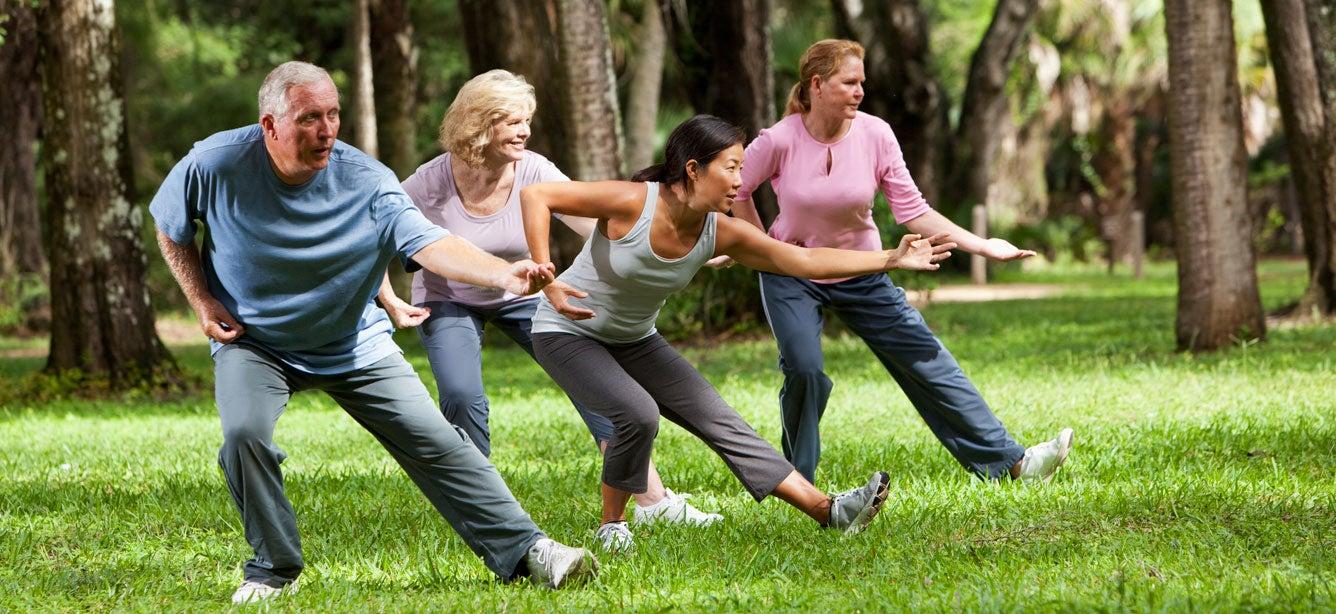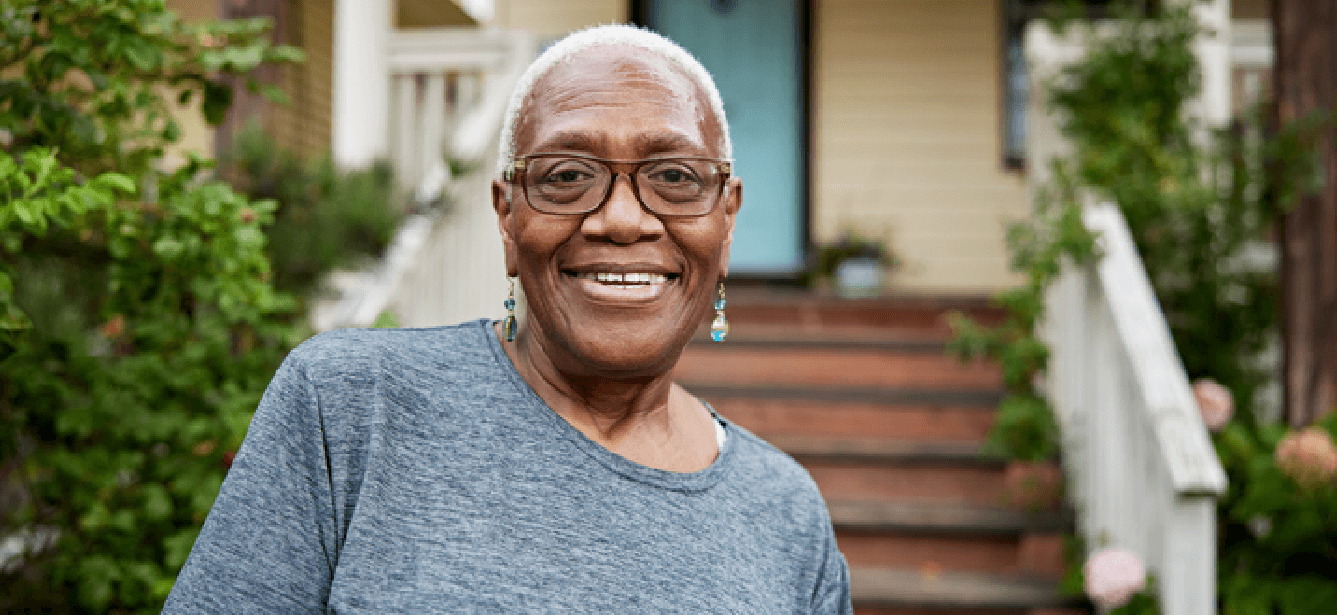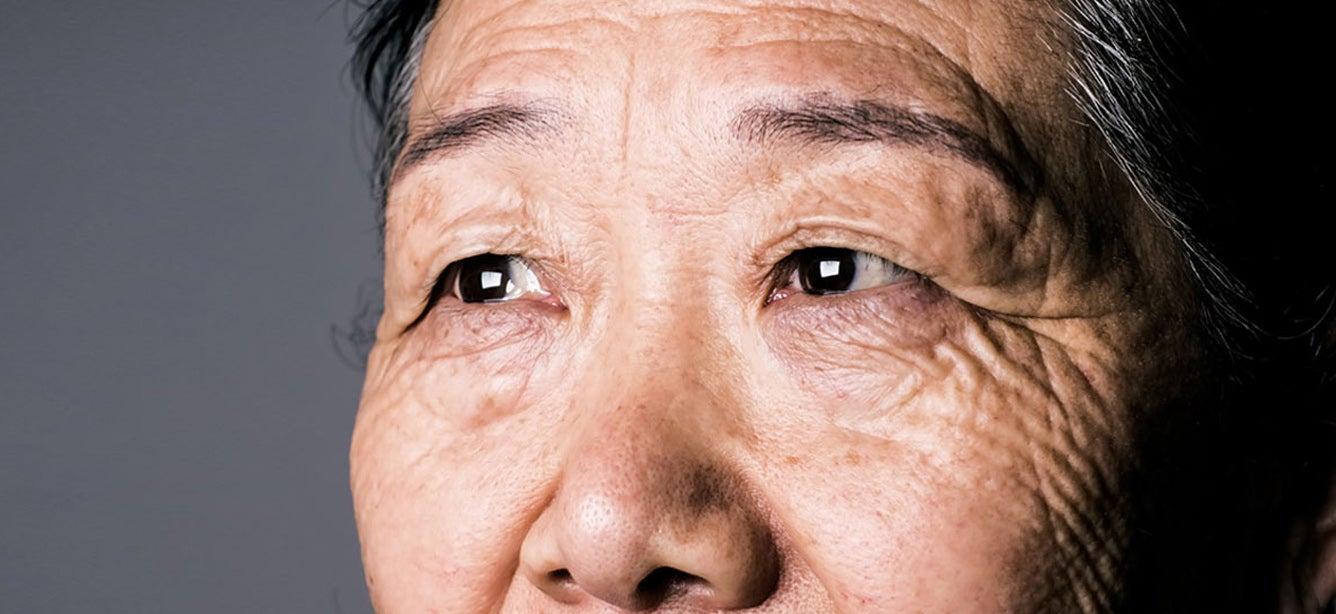
Most of us know someone who has experienced a fall, or we have fallen ourselves. Falls are the leading cause of fatal and nonfatal injuries for older Americans.1 But through practical lifestyle adjustments, evidence-based falls prevention programs, and clinical-community partnerships, the number of falls among older adults can be substantially reduced.
The challenges of falls for older adults
According to the U.S. Centers for Disease Control and Prevention (CDC) and other falls research:
- Fourteen million, or 1 in 4 Americans age 65+, falls each year.1
- Falls are the leading cause of fatal and non-fatal injuries among older adults.2
- In 2021, falls caused 38,000 deaths among those age 65+, and emergency departments reported 3 million visits due to older adult falls.2
- The cost of treating injuries caused by falls among older adults is projected to increase to over $101 billion by 2030.3
- Among older adults who fall, over half receive care in a hospital; the estimated annual average cost per inpatient visit for falls injuries is $18,658 and $1,112 per emergency department visit.4
- Based on data from 2020, the total health care cost of non-fatal older adult falls is $80 billion per year, up from $50 billion in 2015. Sixty-seven percent of fall-related costs are paid for by Medicare, 4% by Medicaid, and 29% is paid privately/out-of-pocket by older adults and families.5
Falls risk factors
Get to know these common risk factors for falls, take the Falls Free CheckUp to check your falls risk, and talk with a health care provider about how to reduce your risk for falls.
- Falling once doubles the risk of falling again.6
- People with vision loss have almost twice the risk of falls as adults without vision impairment.7
- People with hearing loss are nearly three times as likely to fall compared to those with normal hearing, but wearing a hearing aid reduces the risk of falling by 50%.8
- Lower body weakness and difficulties with walking and balance increase someone's risk for falls.
- Certain medications can have side effects and interactions, such as dizziness and fatigue, that increase the risk of falls.
- Chronic conditions such as diabetes and arthritis can increase the risk of falls due to neuropathy, pain, and other symptoms that can affect walking and balance.9
- Hazards in the home, inlcuding clutter, poor lighting, and lack of supports such as grab bars, can cause falls. Home modifications can address these hazards to reduce falls risk in the home.10
Falls, with or without injury, also carry a heavy quality of life impact. A growing number of older adults fear falling and, as a result, limit their activities and social engagements. This can result in further physical decline, depression, social isolation, and feelings of helplessness.
NCOA's role
National Falls Prevention Resource Center
The National Council on Aging (NCOA) leads the National Falls Prevention Resource Center, which supports awareness and educational efforts about falls and promotes evidence-based falls prevention programs and strategies across the nation. The purpose of the center is to:
- Increase public awareness and educate consumers and professionals about the risks of falls and how to prevent falls.
- Support and stimulate the implementation, dissemination, and sustainability of evidence-based falls prevention programs and strategies to reduce the incidence of falls among older adults and adults with disabilities.
- Serve as the national clearinghouse of tools, best practices, and other information on falls and falls prevention.
The National Falls Prevention Resource Center leads the Falls Free® Initiative, a national effort to address the growing public health issue of falls, fall-related injuries, and deaths. The initiative includes a coalition of over 70 national organizations charged with working toward the progress of one or more of the strategies in the National Action Plan. Members disseminate proven falls prevention programs, advocate for funding and regulatory changes, and educate professionals, older adults, and caregivers about how they can reduce their risk of falling. The initiative also includes a 47-member State Coalition on Falls Prevention Workgroup charged with collaboratively promoting effective federal, state, and local strategies to address falls.
The Falls Free® Initiative's work includes:
- Falls Free® National Action Plan: In March 2005, NCOA released the landmark evidence-based Falls Free® National Action Plan to prevent falls and fall-related injuries in older adults. The plan was updated in 2015 and continues to serve as a roadmap and catalyst for action. The plan includes goals, strategies, and action steps to increase physical mobility, reduce the impact of medications as a falls risk factor, and improve home and environmental safety. The plan also promotes the expansion and funding of falls risk screening, assessment, clinical interventions, and evidence-based programs.
- National Falls Prevention Awareness Week: Every September, the Falls Free® Initiative promotes National Falls Prevention Awareness Week. States are encouraged to host and promote falls prevention awareness and screening activities to draw attention to the problem and offer older adults practical solutions.
Sources
1. Centers for Disease Control and Prevention. Older Adult Falls Data. Found on the internet at https://www.cdc.gov/falls/data-research/index.html
2. CDC. About Older Adult Fall Prevention. Found on the internet at https://www.cdc.gov/falls/about/
3. Houry D, Florence C, Baldwin G, Stevens J, McClure R. The CDC Injury Center's response to the growing public health problem of falls among older adults. Am J Lifestyle Med. 2016 Jan-Feb; Found on the internet at https://www.ncbi.nlm.nih.gov/pmc/articles/PMC4681302/
4. Reider L, Falvey J, Okoye S, et al. Cost of U.S emergency department and inpatient visits for fall injuries in older adults. Injury. February 2024. Found on the internet at https://www.sciencedirect.com/science/article/abs/pii/S0020138323009166
5. Haddad YK, Miller GF, Kakara R, et al. Healthcare spending for non-fatal falls among older adults, USA Injury Prevention 2024;30:272-276.
6. CDC. Facts About Falls. Found on the internet at https://www.cdc.gov/falls/data-research/facts-stats/index.html
7. VisionServe Alliance/Ohio State University College of Optometry. United States' Older Population and Vision Loss: A Briefing (2022). Found on the internet at https://visionservealliance.org/big-data-insights-adults-65-and-older/
8. Campos L, Prochazka A, Anderson M, Kaizer A, Foster C, Hullar T. Consistent hearing aid use is associated with lower fall prevalence and risk in older adults with hearing loss. J Am Geriatr Soc. 2023 Oct.. Found on the internet at https://pubmed.ncbi.nlm.nih.gov/37314100/
9. Paliwal Y, et al. Chronic Health Conditions as a Risk Factor for Falls among the Community-Dwelling US Older Adults: A Zero-Inflated Regression Modeling Approach. BioMed Research International. March 2017. Found on the internet at https://pubmed.ncbi.nlm.nih.gov/28459060/
10. Lektip C, et al. Home hazard modification programs for reducing falls in older adults: a systematic review and meta-analysis. PeerJ. July 20, 2023. Found on the internet at https://peerj.com/articles/15699/




